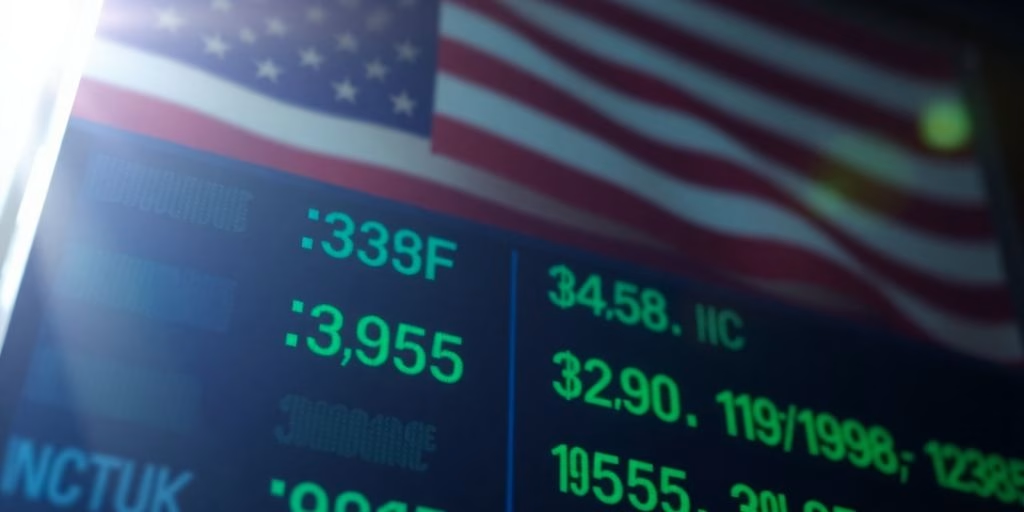The US stock market experienced a mixed start to July 2025, as investors reacted to the Senate’s passage of President Trump’s tax bill and his firm stance on upcoming trade tariff deadlines. While the Dow Jones Industrial Average saw significant gains, the S&P 500 and Nasdaq Composite dipped from their recent record highs, signaling a notable rotation within the market.
Key Market Movements
- The Dow Jones Industrial Average surged by 400 points, or 0.9%, on July 1, 2025.
- The S&P 500 declined by 0.1%, and the tech-heavy Nasdaq Composite fell by 0.8%.
- This performance marked a reversal from June, where the S&P 500 closed at a record high, gaining approximately 11% in Q2, while the Dow gained only 5%.
- Small-cap stocks, as measured by the Russell 2000 index, performed strongly, jumping 1%.
Sectoral Shifts and Market Rotation
The early July trading session highlighted a significant rotation away from large-cap technology companies, which had previously driven market gains. Trillion-dollar tech giants like Nvidia, Meta, and Tesla faced selling pressure. Conversely, small-capitalization companies saw a resurgence, with the Russell 2000 outperforming the Nasdaq Composite by 1.76 percentage points, the largest gap since April.
Market analysts noted this as a substantial underlying rotation. For portfolios that performed strongly in Q2, the start of July likely showed red, and vice versa, indicating a shift in investor preference.
Impact of Trump’s Tax Bill and Trade Remarks
The Senate’s passage of President Trump’s tax bill was a key factor influencing market sentiment. While details of the bill’s specific provisions and their long-term economic impact are still being assessed, its approval contributed to the market’s mixed reactions.
Adding to the market’s considerations were President Trump’s remarks regarding trade tariffs. He stated his intention not to extend the July 9 deadline for the resumption of higher tariffs, despite earlier suggestions from the White House Press Secretary that there might be flexibility. This firm stance on trade policy introduced an element of uncertainty, particularly concerning its potential impact on inflation.
Bond Market and Economic Outlook
The bond market remained relatively stable, with the yield on the 10-year Treasury note closing slightly higher at 4.25%. Yields have generally decreased since April, driven by revised expectations for inflation and potential interest rate cuts by the Federal Reserve. Concerns about foreign investors abandoning U.S. debt have also subsided, bolstered by successful recent Treasury auctions.
Looking ahead, investors are keenly awaiting the June payrolls data, expected on Thursday. Economists forecast a 115,000 increase in payrolls, a decrease from May’s 139,000. Slower job growth could signal a need for the Federal Reserve to implement interest rate cuts in July, potentially providing support to the labor market. However, some experts caution that the Fed might overlook a weak report if their inflation forecasts are influenced by tariffs.
Sources
- Stock Market News, July 1, 2025: Dow ends up 400 points, S&P 500 and Nasdaq slip from record highs to
kick off the second half of 2025; Senate passes Trump’s big bill.<!– –>, MarketWatch. - Stock Market News From July 1, 2025: Dow Rises 400 Points; S&P 500, Nasdaq Slip; Senate Passes Trump Tax
Bill; Tesla, Palantir, Wolfspeed, More Movers, Barron’s. - Stock Market on June 27, 2025: S&P 500, Nasdaq close at all-time highs; U.S. stocks shake off Trump’s
remarks about trade with Canada<!– –>, MarketWatch. - Stock Market News June 30, 2025: Dow ends 275 points higher; S&P 500 and Nasdaq set records on optimism
around trade deals<!– –>, MarketWatch.

